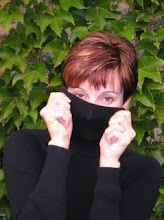December 28
XXthe_virgin_and_child_embracing_1660-1685.jpg) The Virgin and Child Embracing
The Virgin and Child Embracing by Giovanni Battista Salvi Sassofrrato (1660-1685)
The Seven Joys of Mary
performed by The Choir of King's College, Cambridge
arranged by Stephen Cleobury
The very first joy that Mary had,
It was the joy of one
To see her blessed Jesus Christ
When He was first her Son
When He was Her first Son, Good Man;
And blessed may we be,
Both Father, Son, and Holy Ghost
To all eternity.
The next good joy that Mary had,
It was the joy of two
To see her own son Jesus Christ,
To make the lame to go.
To make the lame to go, Good Man,
and blessed may we be,
Both Father, Son, and Holy Ghost,
To all eternity.
The next good joy that Mary had,
It was the joy of three
To see her own son Jesus Christ,
To make the blind to see.
To make the blind to see, Good Man,
and blessed may we be,
Both Father, Son, and Holy Ghost,
To all eternity.
The next good joy that Mary had,
It was the joy of four
To see her own son Jesus Christ,
To read the Bible o'er.
To read the Bible o'er, Good Man,
and blessed may we be,
Both Father, Son, and Holy Ghost,
To all eternity.
The next good joy that Mary had,
It was the joy of five
To see her own son Jesus Christ,
To bring the dead alive.
To bring the dead alive, Good Man,
and blessed may we be,
Both Father, Son, and Holy Ghost,
To all eternity.
The next good joy that Mary had,
It was the joy of six
To see her own son Jesus Christ,
Upon the Crucifix.
Upon the Crucifix, Good Man,
and blessed may we be,
Both Father, Son and Holy Ghost,
To all eternity.
The next good joy that Mary had,
It was the joy of seven
To see her own son Jesus Christ,
To wear the crown of Heaven.
To wear the crown of Heaven, Good Man,
and blessed may we be,
Both Father, Son and Holy Ghost,
To all eternity.
This is another one of the many "counting carols" of Christmas, although traditionally, "The Joys of Mary" has been sung throughout the year. William Sandys, the author of "Carols Ancient and Modern" (1833), wrote that "...this [is] taken from popular broad-side carols, [and contains] rather curious legends, of which may have already been observed in the old carol for St. Stephen."
The earliest known version is in a manuscript of the fourteenth century, where it is entitled "Joyes Fyve." There are many, many different variations of the lyrics, however, and during my research this week, I have discovered as many as fifteen different verses. Of the many variations, the most generally accepted versions are "Joys Seven", and "The Twelve Joys of Mary". It is noted, however, that the extension of the Seven Joys to Twelve is confined to the northern parts of England, hence its tag of "The Newcastle Version".




























No comments:
Post a Comment